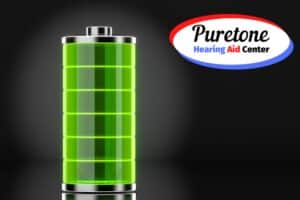Hearing is a precious sense that allows us to connect with the world around us, but what happens when suddenly we find ourselves struggling to hear? Unexpected hearing loss can be a frightening and disorienting experience, impacting our ability to communicate, enjoy social interactions, and fully engage in daily activities. If you or a loved one have recently experienced sudden hearing loss, it’s crucial to take immediate action. In this blog post, we will discuss the steps you should take when faced with sudden hearing loss, the importance of seeking professional help, and the various treatment options available at Puretone Hearing Aid Center.
Recognizing the Signs of Sudden Hearing Loss
Sudden hearing loss can manifest in different ways, and it’s important to be aware of the common symptoms and signs. These may include a sudden reduction in hearing ability or the complete loss of hearing in one or both ears, a feeling of fullness or pressure in the ears, tinnitus (ringing or buzzing in the ears), or difficulty understanding speech or following conversations. If you experience any of these symptoms, it’s essential to seek professional help promptly.
Contacting a Hearing Care Professional
When faced with sudden hearing loss, reaching out to a hearing care professional should be your top priority. At Puretone Hearing Aid Center, our team of experienced professionals is dedicated to helping individuals with hearing loss regain their quality of life. Don’t hesitate to contact us to schedule an appointment, as prompt action can significantly improve the chances of successful treatment.
Emergency Measures for Hearing Loss
While waiting for your appointment, there are a few emergency measures you can take to protect your hearing. Firstly, avoid exposure to loud noises, as they can potentially worsen your condition. Protect your unaffected ear by wearing earplugs or earmuffs in situations where loud noises are inevitable, such as concerts or construction sites. It’s important to be conscious of your surroundings and take proactive steps to safeguard your hearing.
Seeking Medical Attention
Sudden hearing loss requires immediate medical attention, as there can be underlying causes that need to be addressed. An evaluation by an ear, nose, and throat (ENT) specialist is essential to determine the cause of the hearing loss and develop an effective treatment plan. The sooner you seek medical attention, the better your chances are for recovery.
Treatment Options
The treatment options for sudden hearing loss vary depending on the individual and the underlying cause of the condition. At Puretone Hearing Aid Center, our skilled professionals will conduct a comprehensive assessment to determine the most suitable treatment plan for you. This may involve hearing aids, which can significantly improve your hearing and quality of life. In some cases, medications or surgical interventions may be necessary. Rest assured that your hearing care professional will guide you through the treatment process and provide ongoing support.
Coping Strategies and Support
Dealing with sudden hearing loss can be emotionally challenging, and it’s important to seek coping strategies and support during this time. Consider joining support groups where you can connect with others who have experienced similar situations. Additionally, counseling can help you navigate the emotional impact of hearing loss and develop effective coping mechanisms. Surround yourself with friends and family who can offer understanding, encouragement, and support throughout your journey.
Sudden hearing loss can be a distressing experience, but taking immediate action is vital. By recognizing the signs, contacting a hearing care professional, and seeking medical attention, you can increase your chances of successful treatment and regain your quality of life. At Puretone Hearing Aid Center, we are here to support you every step of the way. Don’t delay in seeking help if you or someone you know is experiencing sudden hearing loss. Remember, you’re not alone, and our team is here to provide the care and guidance you need. Contact Puretone Hearing Aid Center today.



